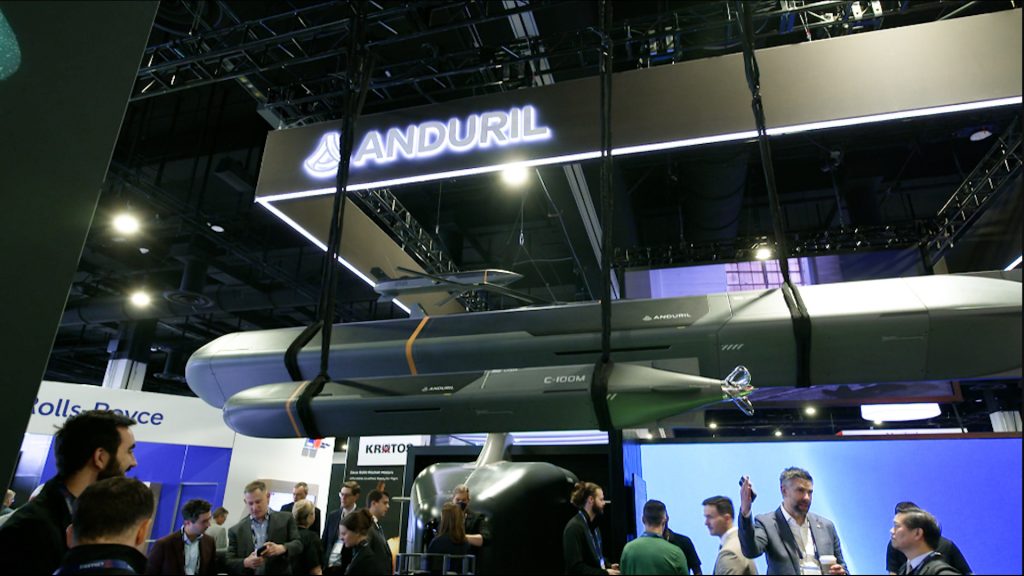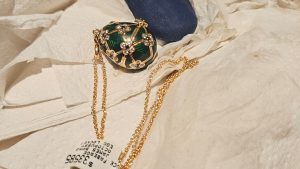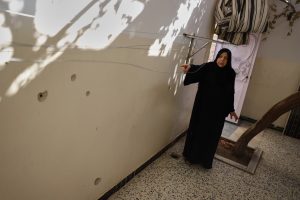No longer a startup, Anduril dives beneath the waves to chase innovation

When does a startup stop being a startup and become something all its own? Something new? Something to be reckoned with?
Wherever that imaginary line exists, it seems Anduril Industries might have crossed it.
No longer the new toy in Palmer Luckey’s portfolio of ventures, Anduril has become a serious player in the Department of Defense’s efforts to modernize its forces while preparing for America’s next potential conflict.
From Anduril’s air systems like Bolt, Barracuda, and Roadrunner, to the Fury, their entry in the race to build the Air Force’s Collaborative Combat Aircraft, Anduril clearly has its sights on the skies.
So it really should be no surprise that the company has amped up its underwater efforts as well. That new focus is the subject of this week’s debrief.
New kinds of threats
With a marketing look as distinctive as the approach to developing new hardware for the Department of Defense, Anduril’s launch of its underwater systems, the Copperhead and Seabed Sentry, marked its latest salvo in the race to build affordable, sustainable options for the Pentagon.
“The whole intent here is to create a new type of subsea effector to deal with the proliferation of enemy UUVs, particularly the PRC, also Russia, and getting very good at this,” said Shane Arnott, senior vice president of programs and engineering at Anduril. “So why spend a very expensive weapon like a Mark 48 on a UUV? That is perhaps like a fifth of the cost. So we created this particular system, which is a fraction of those, to address the new targets that are proliferating in the maritime space.”
To do that, Anduril built a couple of distinctive variants of the Copperhead AUV.
“One of the variants, if you will, of the Copperhead is the Copperhead M, which is the munitions variant,” Arnott explained. “So in effect, that is a torpedo. So the two different sizes, the Copperhead 100 is 100-pound payload. The Copperhead 500 is 500-pound payload. And that basically kind of tracks generally with the Mark 54 torpedo, which roughly has a 100-pound warhead, and the Mark 48 which roughly has a 500- to 600-pound warhead.”
Focusing beneath the waves
Not content with delivering payloads, Anduril also developed an AI-powered sensor called Seabed Sentry that connects users to the ocean’s depths. By placing these sensors in large numbers, Anduril created a wireless network allowing operators to monitor and communicate underwater in real-time, making it possible to constantly watch maritime assets and infrastructure.
“This particular system is completely cableless so it can be delivered clandestinely by the Dive XL, which is super important because you do not want your security cameras in places that your threat knows,” Arnott said. “Whereas these cabled systems, they are laid by big ships, so you know exactly where the surveillance system is going to be. So we are just providing this different approach.”
Given Anduril’s work with autonomous vehicles, one might think its underwater systems would operate much like aerial systems, but conditions are very different under the sea. According to Arnott, the sea is pretty unforgiving when it comes to communication.
“You are GPS denied the whole time, you have got no access to satellites,” he said. “So it is a real master class for autonomy to do that. But absolutely, all of our systems talk with each other. They are all talking the same language, using lattice AI, and that gives us the ability to school or to team all of our different systems together to achieve kind of combined outcomes.”
Teamwork makes the dream work
While visiting with Arnott, Straight Arrow News discovered an Anduril partnership with another startup previously profiled on “Weapons and Warfare.” Sharrow Marine, the Michigan-based startup that is leading the way in propeller innovation, can be found on an array of Anduril’s AUVs.
“So Sharrow, best in class when it comes to efficiency of props,” Arnott said about the partnership. “So, yeah, we have been working with them on some other projects that are not public, and it was an easy read across for them to come onto this particular system in the Copperhead. And they are in an affordable category, like you look at some of the props that are on the real torpedoes. They are incredibly expensive. The props alone would be the same cost as a full Copperhead.”
Anduril isn’t done expanding
Anduril’s big ambitions require some big real estate. Shortly after announcing the Copperhead and Sea Sentry platforms, the Orange County Business Journal reported that Anduril would be renting some warehouse space a little less than a mile from its headquarters in Costa Mesa, bringing its total footprint in Orange County, California, to about 1.1 million square feet. The lease marked yet another step in Anduril’s meteoric growth since opening shop in a small building near John Wayne Airport back in 2017.
Access the full Weapons and Warfare episode here.
Access all Weapons and Warfare podcast episodes here.





